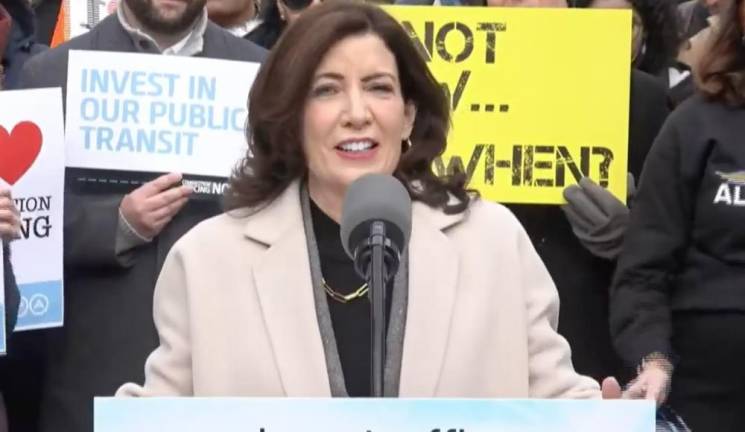MTA Board OKs Congestion Pricing Plan, Including $15 Base Toll; Public May Now Comment
After the MTA’s Traffic Mobility Board provided its recommended congestion pricing levies–including a $15 base toll–on November 30, they handed them up to the agency’s full Board. On December 6, that body voted 9 to 1 in favor of the other board’s conclusions. Agreed-to concessions include a $5 credit for people facing E-ZPass tolls at various tunnels entering the zone. People without E-ZPasses would pay a base toll of $22.50 to enter the congestion zone.

Congestion pricing has come one step closer to reality, after the full MTA board overwhelmingly voted for toll recommendations determined by the agency’s Traffic Mobility Board last month. The December 6 tally came in at 9 to 1, with David Mack of Nassau County serving as the only dissenter.
Many of the proposals suggested by the Traffic Mobility Board on November 30 made the cut. These included a $15 base toll, nighttime discounts of 75 percent, and fees of either $1.25 or $2.50 for ride-share and taxi drivers. Motorcycles will pay half-price at $7,50, while trucks will have to pay between $24 and $36 during peak hours.
According to a report in NY1, the fine print of the pricing plan indicates that drivers without E-ZPasses will pay a base fee of $22.50.
Mayor Eric Adams, who generally supports the pricing scheme and is tasked with implementing it, listed some qualms with the initial suggestions. For example, he wanted exemptions for people going to medical appointments within the zone. The MTA rejected this, pointing to another carveout for vehicles carrying disabled people (such as Access-A-Ride). They also cited transportation discounts available through Medicaid or Medicaid advantage.
The mayor has also called the $15 base toll the “beginning of the conversation.” A 60-day public comment period kicks off now that the MTA board vote has concluded.
New Jersey has also unleashed full-fledged legal war against the pricing plan, staking out opposition to any fees being added to already-existing E-ZPass tolls. Indeed, there are four different tunnels that land below 60th St. where cars are hit with preexisting tolls: the Lincoln and Holland tunnels from NJ, the Hugh L. Carey Tunnel to Brooklyn, and the Queens-Midtown Tunnel to Long Island.
However, the MTA agreed to a moderate $5 crossing credit for these routes. They noted that a full crossing credit of $14–roughly the tolling cost of a round trip through the tunnels–would’ve meant that out-of-borough (or out-of-state) commuters only had to provide 11 percent of the plan’s revenue. Crossing credits for motorcycles are set at $2.50, with buses or trucks having to pay between $12 and $20.
Drivers that make less than $50,000 will get 10 free rides a month, after which they’ll need to pay half-price.
MTA Chair Janno Lieber hailed the full board vote, saying that it was “essential to the city’s future.” Responding to critics of the plan, he quipped that he had once told his “MTA team” that “we’re going to do the hard stuff.”
He got some backup from NYS Governor Kathy Hochul a day earlier, when they both made appearances at a Union Square rally packed with congestion pricing supporters. “From time to time, leaders are called upon to envision a better future, be bold in the implementation and execution, and be undaunted by the opposition,” Hochul pronounced.
She also asked the crowd if anybody was “sick and tired” of gridlock in NYC, getting some loud “yeas” from the assembled crowd.
Lieber had some sharp comments of his own for New Jersey. “Our neighbors across the river seem content to let traffic keep choking our streets–they are our streets, in case anybody is confused about that,” he told rallygoers.
He also joked that he was “still waiting for the call where they ask our opinion about tolls on the Jersey Turnpike and the Garden State Parkway.”